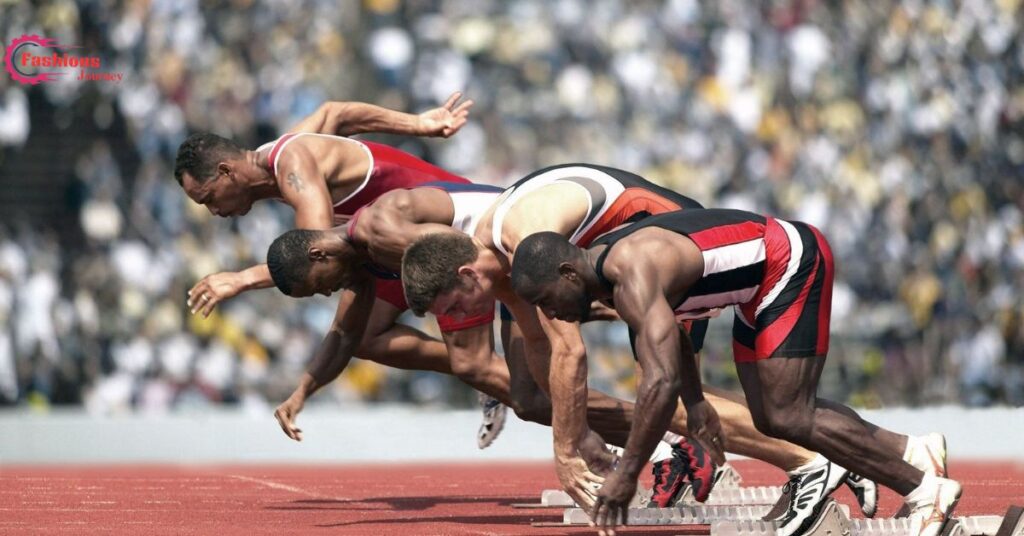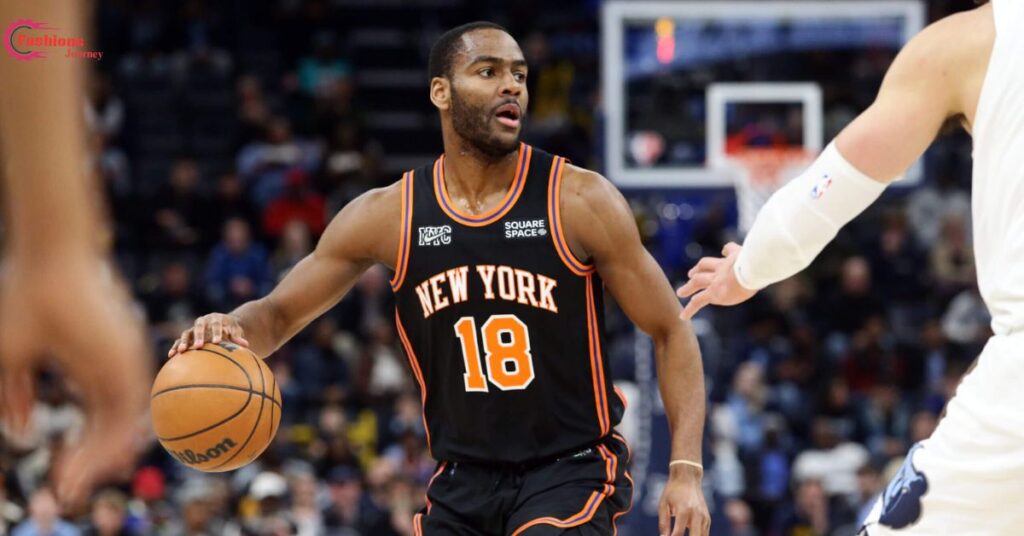In the high-stakes world of professional sports, the draft process is a crucial moment where teams aim to secure future talent and bolster their rosters.
However, not all draft picks pan out as expected, leading to the phenomenon of unsuccessful draft picks.
This comprehensive analysis delves into the intricacies of these draft misses, exploring their impact on teams, players, and the broader sports management landscape.
What is an Unsuccessful Draft Pick?

In the world of professional sports, the draft is a crucial event where teams select new players to join their ranks.
An unsuccessful draft pick refers to a player chosen by a team who fails to meet expectations or contribute significantly to the team’s success.
This phenomenon is a common occurrence across various sports leagues and can have far-reaching consequences for both the team and the player involved.
Read This Blog: Introduction to Smoothstack Lawsuit
The Importance of Draft Picks in Leagues
They represent an opportunity for organizations to infuse fresh talent into their rosters, potentially securing future stars who can elevate the team’s performance for years to come.
The draft system is designed to maintain competitive balance within leagues by allowing lower-performing teams to have priority in selecting top prospects.
For many teams, especially those in rebuilding phases, draft picks are viewed as valuable assets.
What is an Unsuccessful Draft Pick Called?

When a draft pick fails to live up to expectations, various terms are used to describe the situation.
While there isn’t a single, universally accepted term, several phrases have become common in sports discourse.
Read This Blog: PedroVazPaulo Financial Consulting: Your Path to Financial Success
Exploring Common Terms Used
- “Bust”: Perhaps the most widely used term, a “bust” refers to a highly touted draft pick who dramatically underperforms relative to their draft position.
- “Flop”: Similar to “bust,” a “flop” describes a player who fails to succeed or make a significant impact in the league.
- “Washout”: This term is often used for players who quickly fade from the professional scene, unable to establish themselves at the highest level.
- “Disappointment”: A milder term, often used for players who, while not complete failures, fail to live up to the high expectations set for them.
- “Underachiever”: This describes a player who, despite showing flashes of potential, consistently performs below the level expected of their draft position.
The Meaning of Unsuccessful Draft Picks
The concept of an unsuccessful draft pick goes beyond mere terminology.
It encompasses a complex interplay of factors that can have significant repercussions for all parties involved.
Impact on Teams
For sports organizations, an unsuccessful draft pick can be a setback in both short-term and long-term planning.
Teams invest considerable resources in scouting, player development, and financial commitments when making draft selections.
When these picks fail to pan out, it can lead to:
- Roster gaps: The team may be left with a void in a position they hoped to fill, potentially impacting their competitive ability.
- Financial strain: High draft picks often come with substantial contracts, tying up salary cap space that could have been used elsewhere.
- Missed opportunities: The selection of an unsuccessful player means passing on other prospects who may have been more beneficial to the team.
- Pressure on management: Repeated draft failures can lead to scrutiny of the team’s front office and scouting department, potentially resulting in personnel changes.
Impact on Careers
For the athletes themselves, being labeled an unsuccessful draft pick can have profound effects on their professional and personal lives:
- Reduced playing time: As teams lose confidence in the player’s abilities, opportunities on the field or court may diminish.
- Psychological toll: The pressure to live up to draft expectations can be immense, and failure to do so can impact a player’s mental health and confidence.
- Career instability: Unsuccessful draft picks may find themselves traded, released, or struggling to secure long-term contracts.
- Public scrutiny: High-profile draft busts often face criticism from fans and media, which can be challenging to navigate.
Fan Perceptions
The impact of unsuccessful draft picks extends to the fan base as well:
- Disappointment: Fans who had high hopes for a draft pick may feel let down, affecting their emotional investment in the team.
- Skepticism: Repeated draft failures can lead to a loss of faith in the team’s decision-making process.
- Decreased engagement: In extreme cases, a string of unsuccessful picks might lead to reduced attendance or merchandise sales.
How Do Athletes and Teams Move on From an Unsuccessful Draft Pick?

Moving past the disappointment of an unsuccessful draft pick requires resilience and strategic thinking from both players and organizations.
The Unforeseen Journey of Unsuccessful Draft Picks
For athletes, the path forward often involves:
- Self-reflection: Analyzing areas for improvement and addressing weaknesses in their game.
- Seeking new opportunities: This may include changing teams, trying different positions, or even exploring overseas leagues.
- Mental fortitude: Developing the psychological resilience to overcome setbacks and criticism.
- Redefining success: Adjusting expectations and finding ways to contribute meaningfully, even if not at the initially projected level.
For teams, the process of moving on typically includes:
- Honest evaluation: Assessing what went wrong in the scouting and selection process.
- Roster management: Making difficult decisions about whether to retain or release unsuccessful picks.
- Improved scouting: Refining evaluation methods to reduce the likelihood of future unsuccessful picks.
- Public relations: Managing fan expectations and communicating the team’s strategy moving forward.
Unsuccessful Draft Picks Crosswords

The concept of unsuccessful draft picks has permeated popular culture to the extent that it occasionally appears in crossword puzzles, reflecting its significance in sports discourse.
How the Concept Appears in Puzzles
Crossword creators often use terms related to unsuccessful draft picks as clues or answers in their puzzles.
These puzzle entries not only test solvers’ knowledge of sports terminology but also highlight the widespread understanding of the concept in general culture.
Notable Examples of Unsuccessful Draft Picks
The annals of sports history are punctuated with instances of highly touted draft picks who failed to meet expectations.
From Ryan Leaf in the NFL to Darko Milicic in the NBA, these cases serve as cautionary tales in the unpredictable world of talent evaluation.
While it’s important to approach such examples with sensitivity, they provide valuable insights into the complexities of the draft process and the myriad factors that can influence a player’s professional trajectory.
Highlighting Well-Known Cases
While it’s important to approach this topic with sensitivity, examining notable cases can provide insight into the complexities of draft selection:
- Ryan Leaf (NFL): Selected second overall in the 1998 NFL Draft, Leaf’s professional career was marred by poor performance and off-field issues.
- Darko Milicic (NBA): Chosen second in the 2003 NBA Draft, ahead of future stars like Carmelo Anthony and Dwyane Wade, Milicic struggled to find his footing in the league.
- Alexandre Daigle (NHL): The first overall pick in the 1993 NHL Draft, Daigle’s career never matched the hype surrounding his selection.
- Brien Taylor (MLB): Drafted first overall by the New York Yankees in 1991, Taylor’s promising career was derailed by injury before he could reach the major leagues.
How to Minimize the Risk of Unsuccessful Draft Picks

While no foolproof method exists to eliminate the risk of unsuccessful draft picks, teams can employ various strategies to improve their success rate:
- Comprehensive scouting: Investing in a robust scouting department that evaluates players not just on physical skills but also on mental attributes, work ethic, and character.
- Data analytics: Utilizing advanced statistics and predictive models to complement traditional scouting methods.
- Psychological assessments: Incorporating mental health professionals in the evaluation process to gauge a prospect’s ability to handle the pressures of professional sports.
- Diversified draft strategy: Balancing high-risk, high-reward selections with safer picks to create a more stable draft portfolio.
- Improved player development: Investing in coaching and facilities to help drafted players reach their full potential.
- Learning from past mistakes: Conducting thorough post-draft analysis to understand what factors contributed to both successful and unsuccessful picks.
The Future of Draft Picks

As sports continue to evolve, so too will the approach to draft picks.
Emerging trends include:
- Increased emphasis on versatility: Teams are likely to value players who can adapt to multiple positions or roles.
- Global scouting: With talent emerging from diverse geographic regions, scouting efforts are becoming increasingly international.
- Technology integration: Virtual reality and AI-powered analytics may play a larger role in player evaluation.
- Mental health focus: Greater attention to a prospect’s psychological readiness for professional sports.
- Collaborative decision-making: Involving a wider range of perspectives, including coaches, scouts, and analytics experts, in the draft selection process.
FAQ’s
What defines an Unsuccessful Draft Pick?
An unsuccessful draft pick is a player who fails to meet performance expectations relative to their draft position, often struggling to contribute significantly to their team’s success.
How do Failed Picks Impact Teams?
Failed picks can lead to roster gaps, financial strain, missed opportunities, and increased pressure on team management to improve scouting and decision-making processes.
Can Players Recover from Failed Draft Picks?
Yes, some players can recover through perseverance, position changes, or finding success with different teams, though it often requires significant effort and resilience.
How do Unsuccessful Picks Affect Fan Perception?
Unsuccessful picks can lead to fan disappointment, skepticism about team management, and in some cases, decreased engagement with the team.
What Strategies Minimize Draft Risks?
Teams can minimize risks through comprehensive scouting, data analytics, psychological assessments, diversified draft strategies, and improved player development programs.
Conclusion
Unsuccessful draft picks remain an inevitable part of professional sports, reflecting the challenges of predicting human potential and performance.
While they can have significant impacts on teams, players, and fans, they also serve as valuable learning experiences for sports organizations.
As the science of talent evaluation continues to advance, teams are developing more sophisticated methods to minimize the risk of draft busts.
The human element of sports ensures that there will always be an element of unpredictability in the draft process.

Liam Patel is a passionate fashion enthusiast with a keen eye for style trends.
With a background in textile design and years of experience in the fashion industry, Liam brings a unique perspective to his writing. He loves exploring sustainable fashion and street style.








